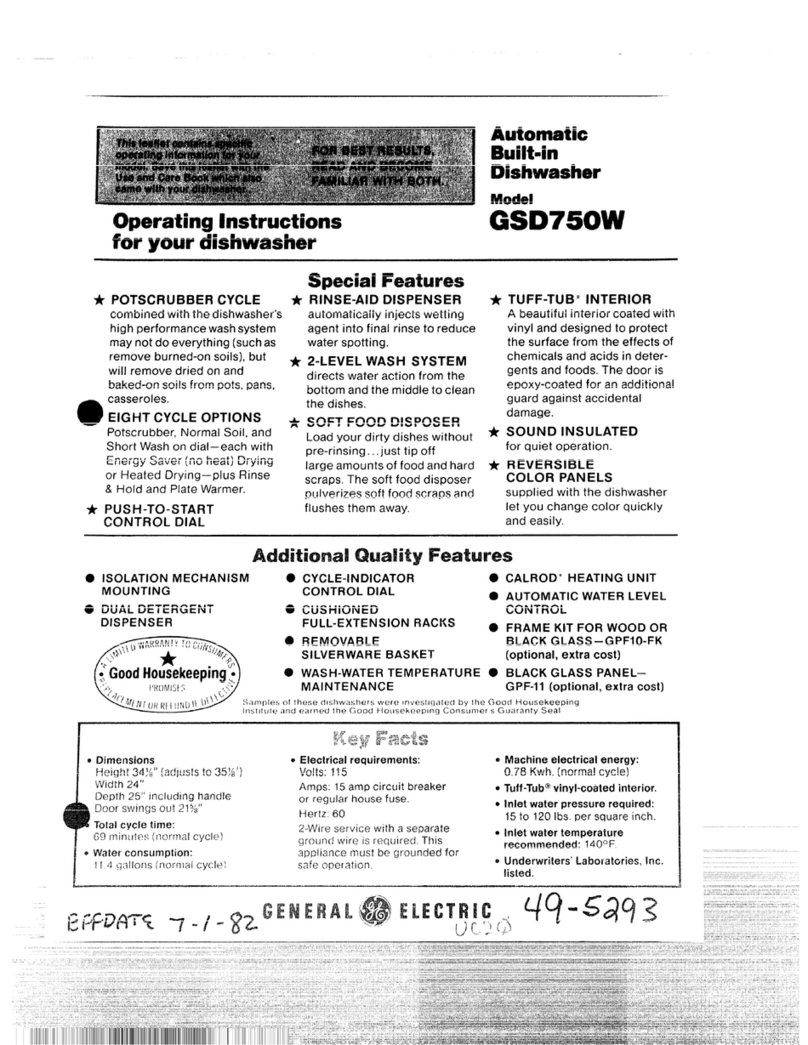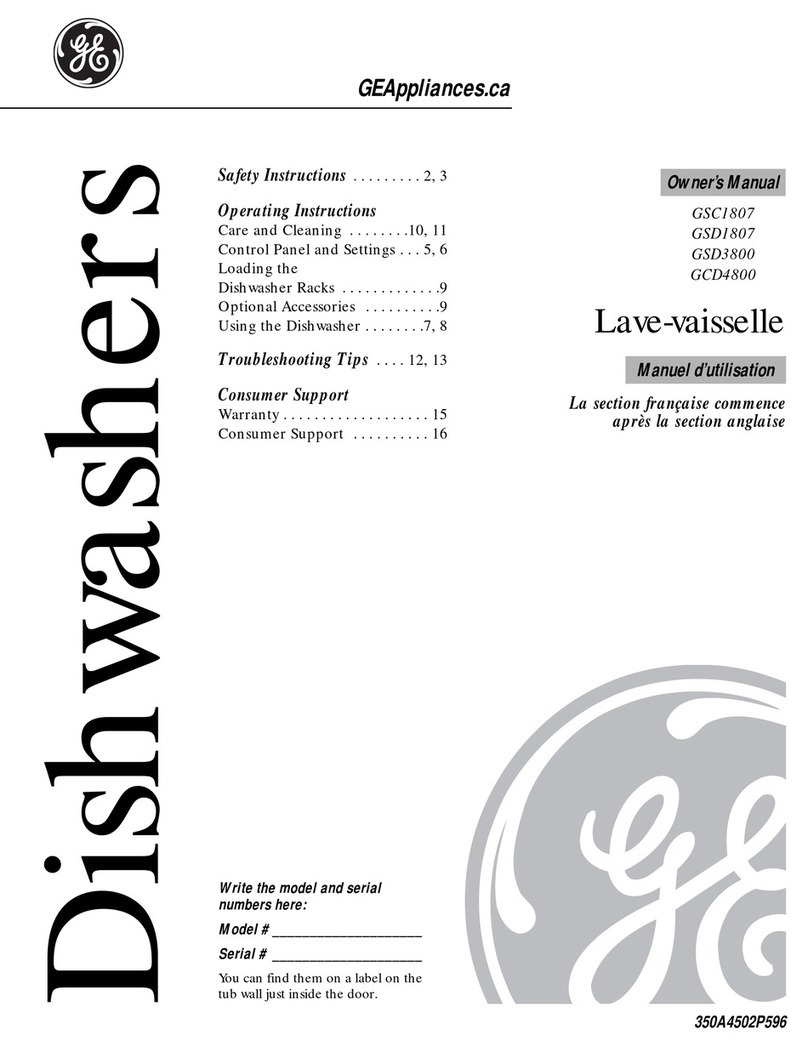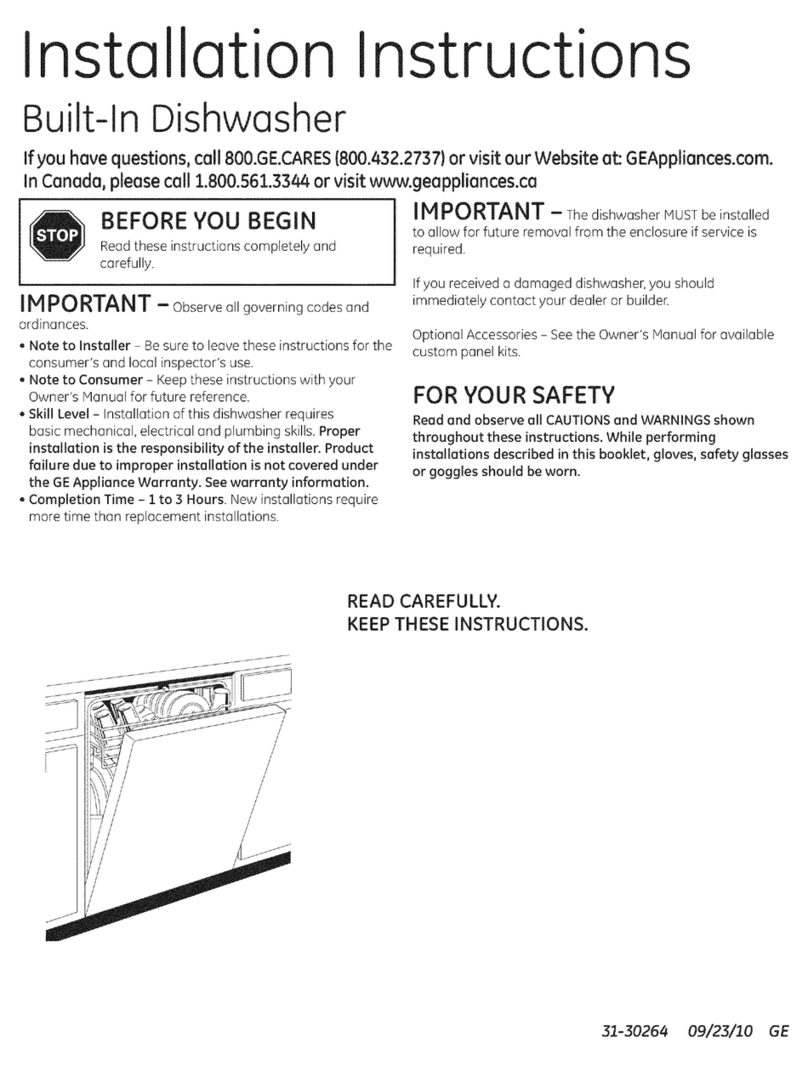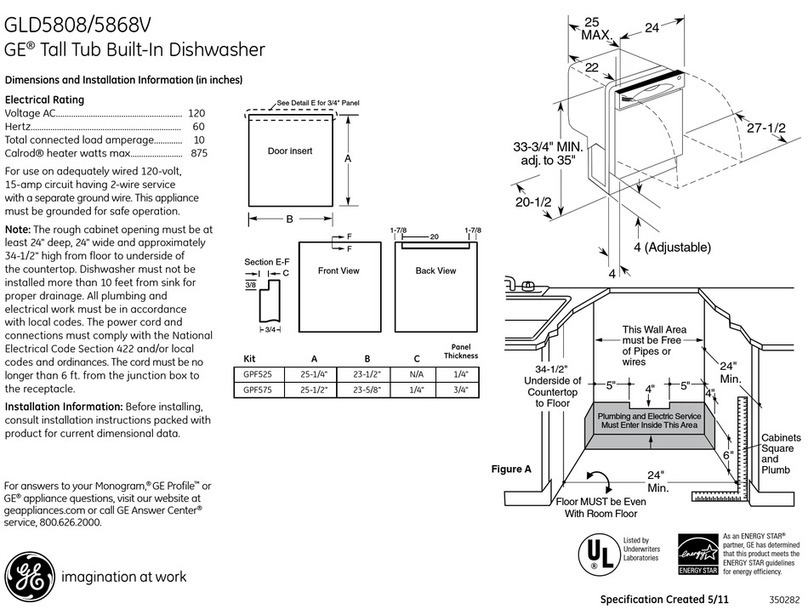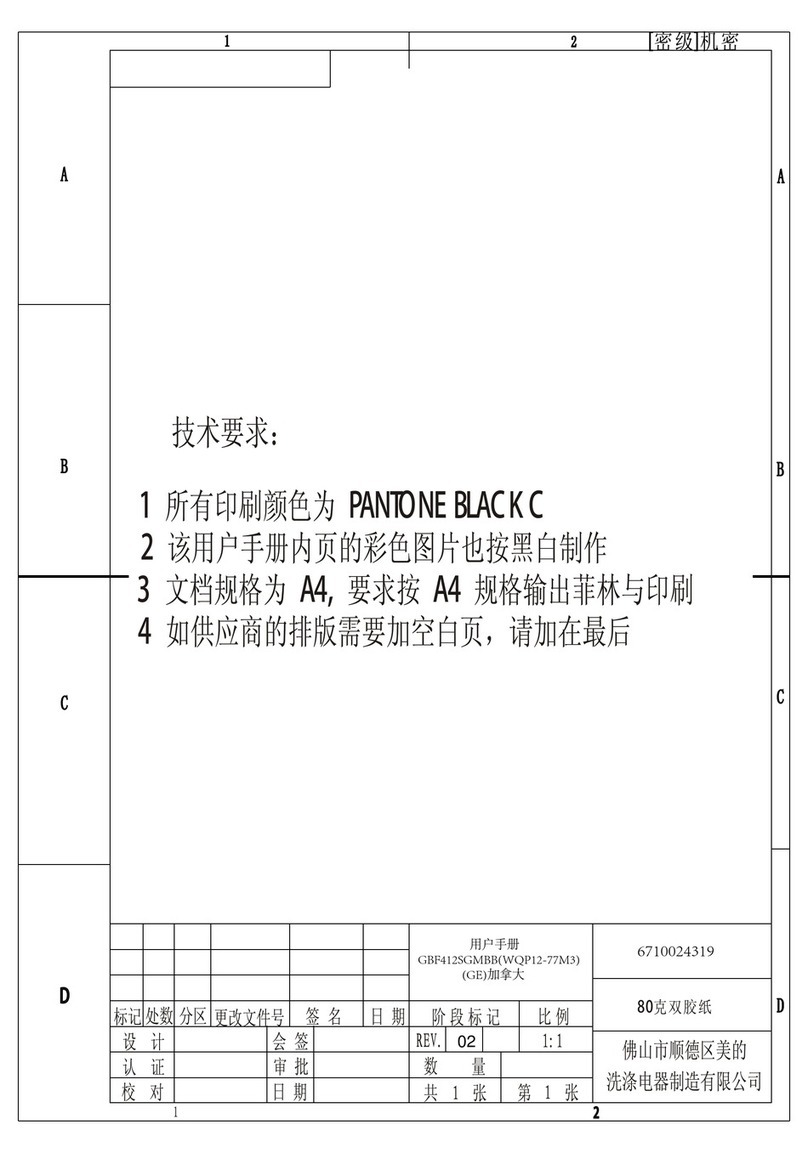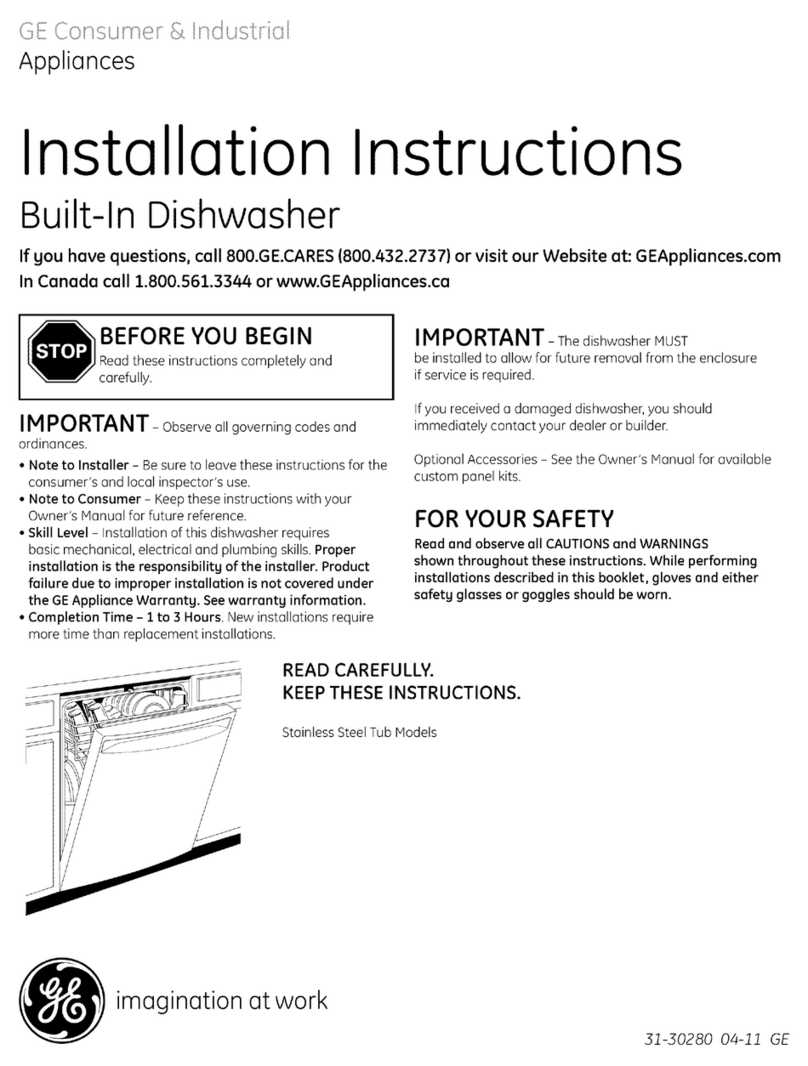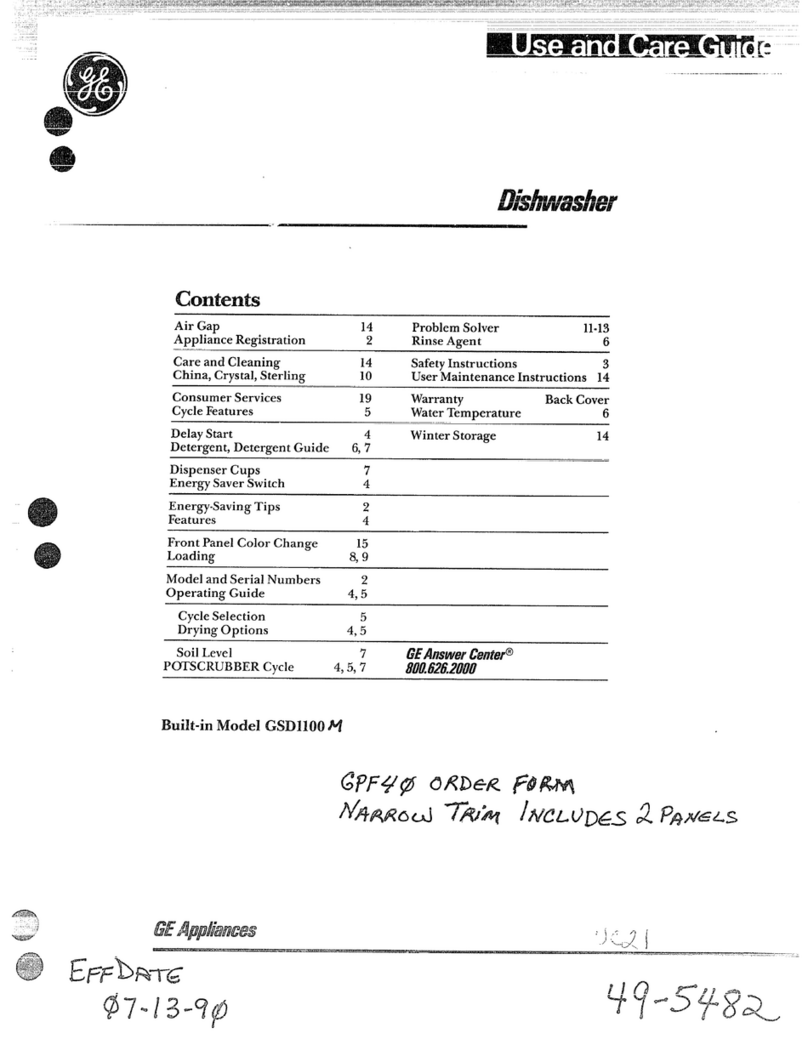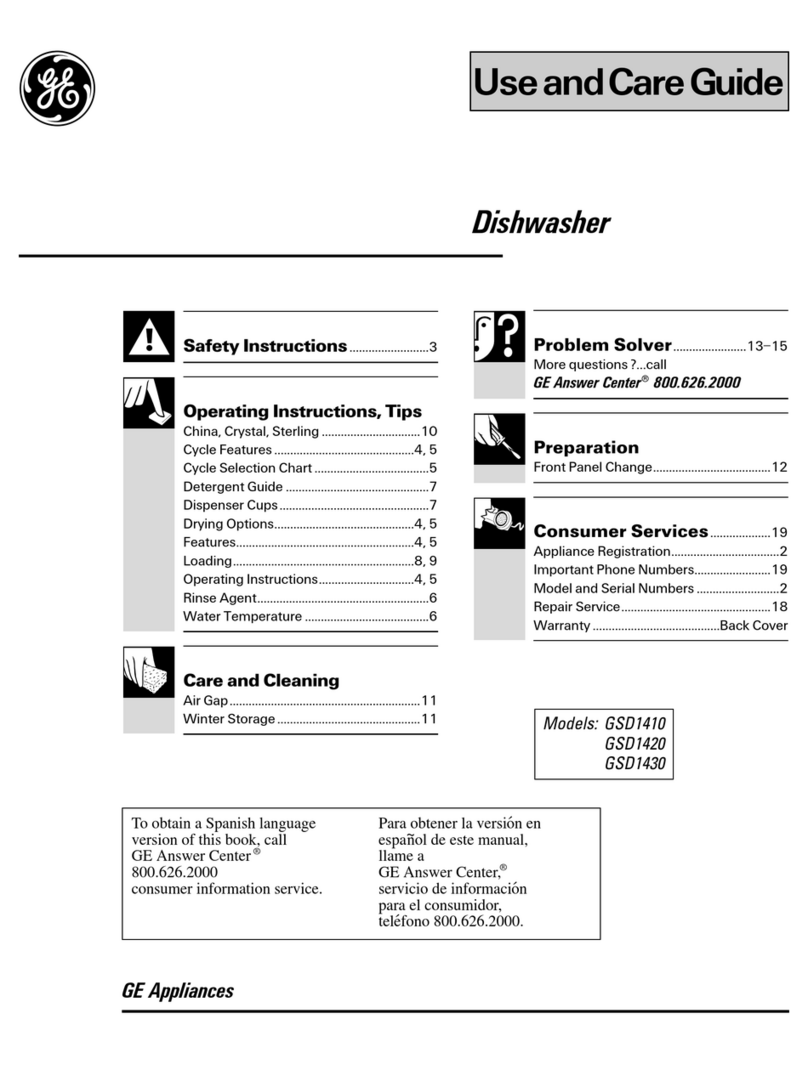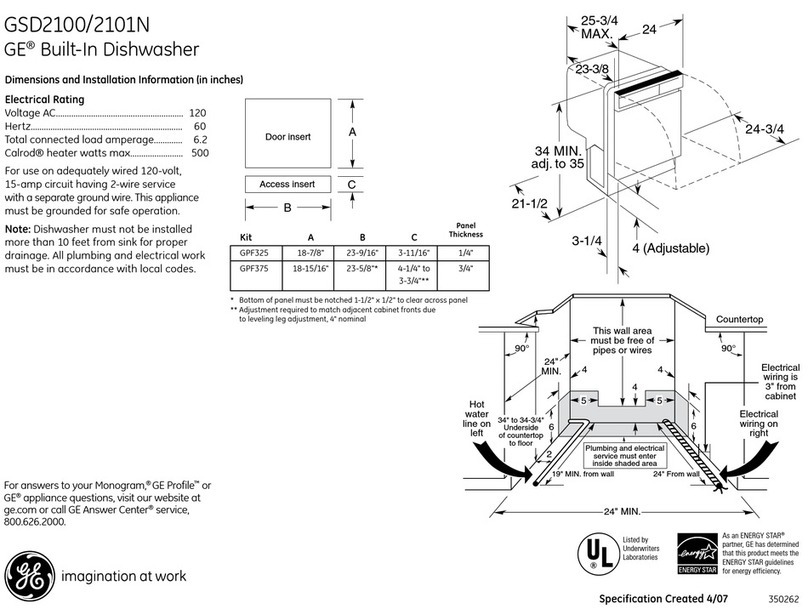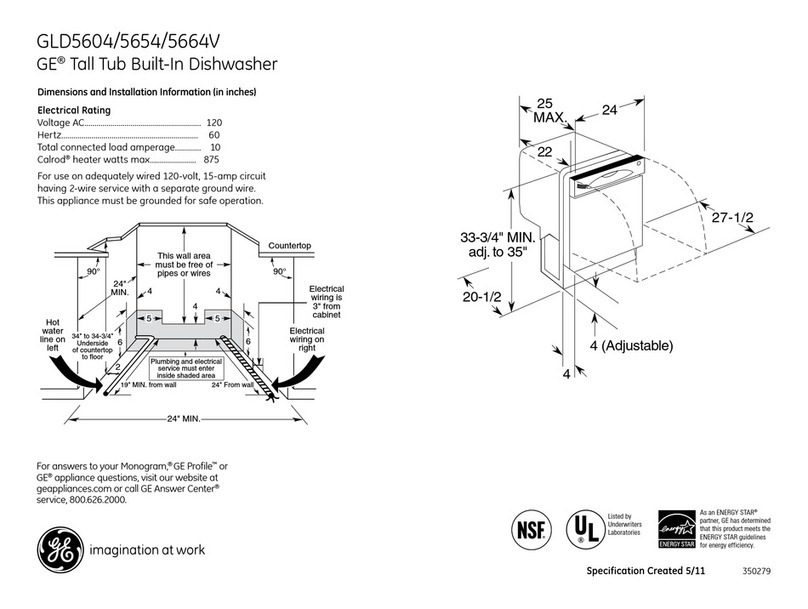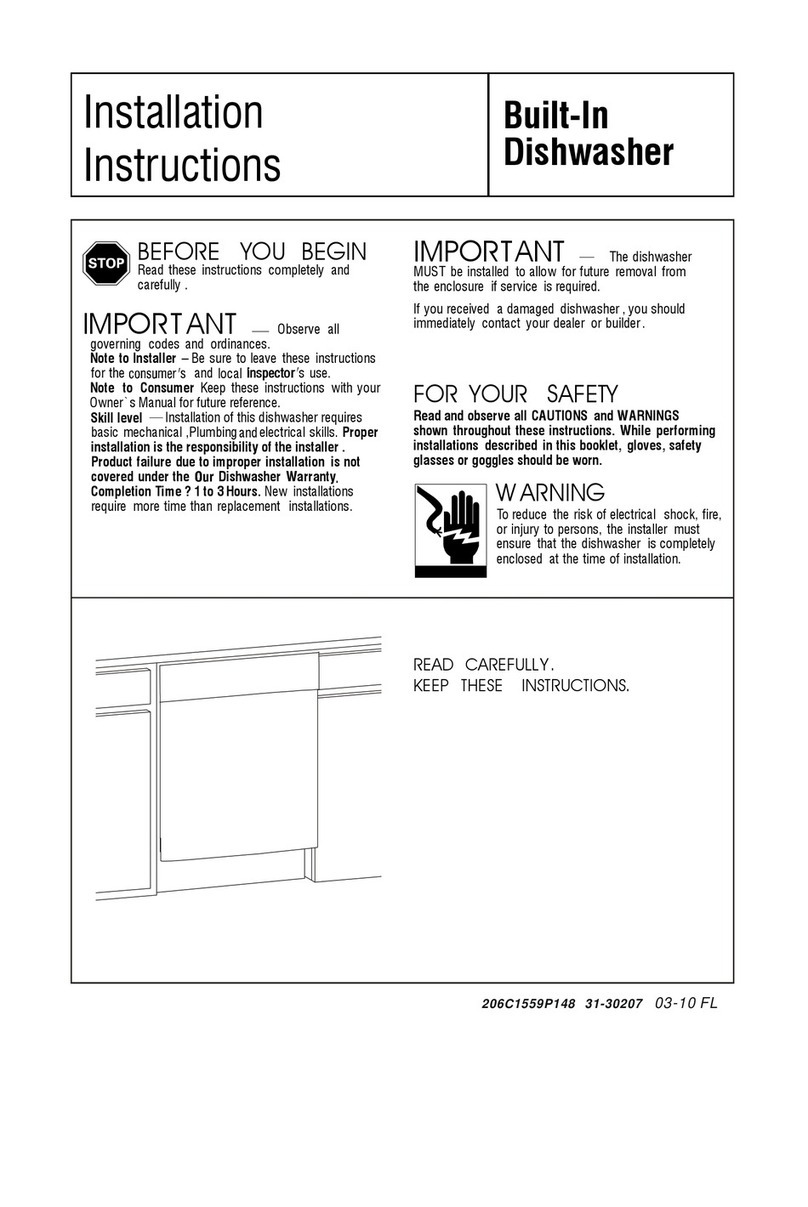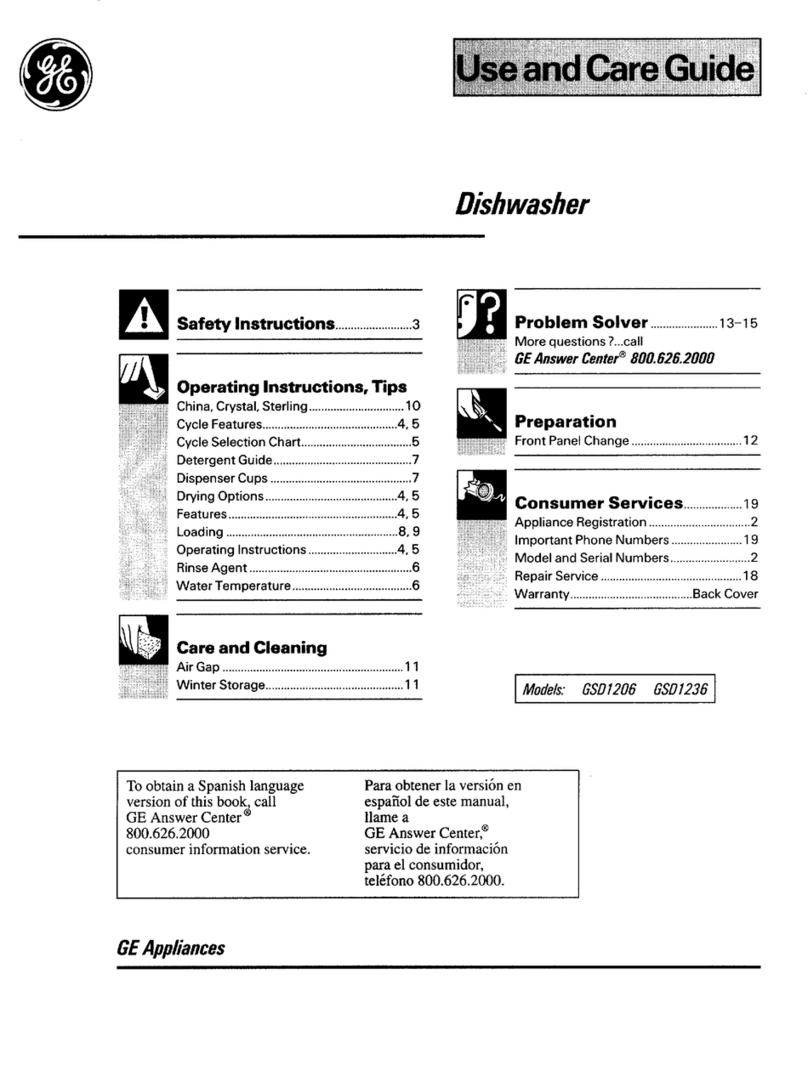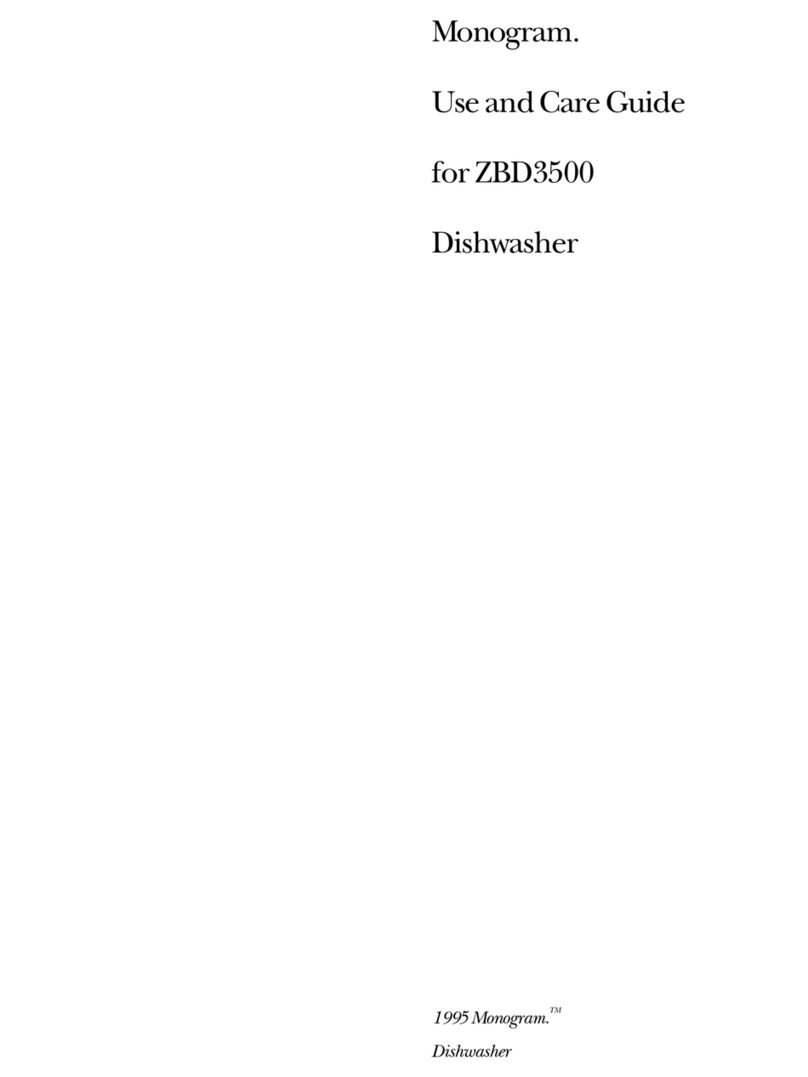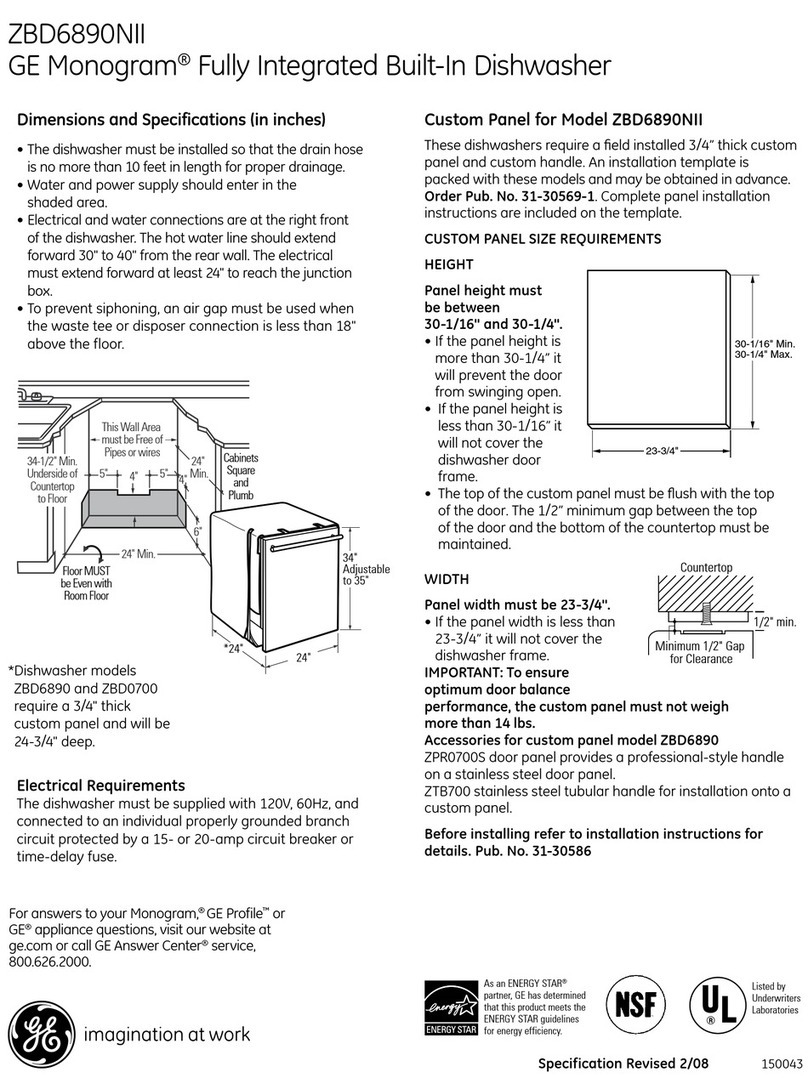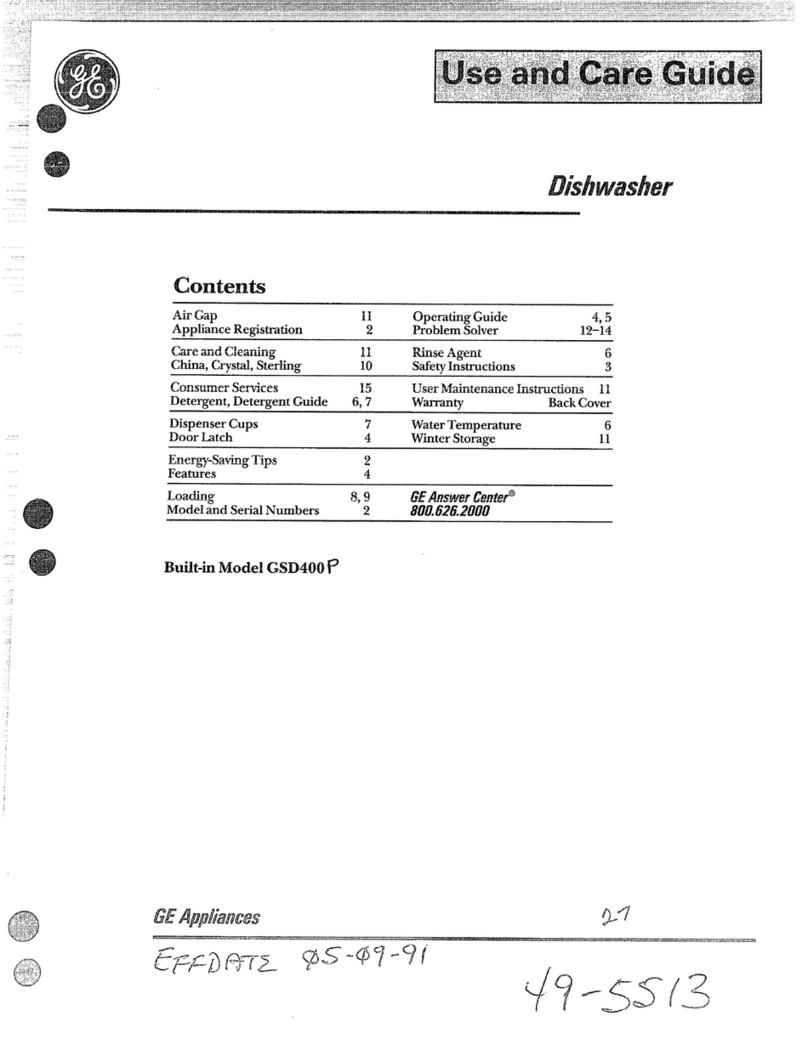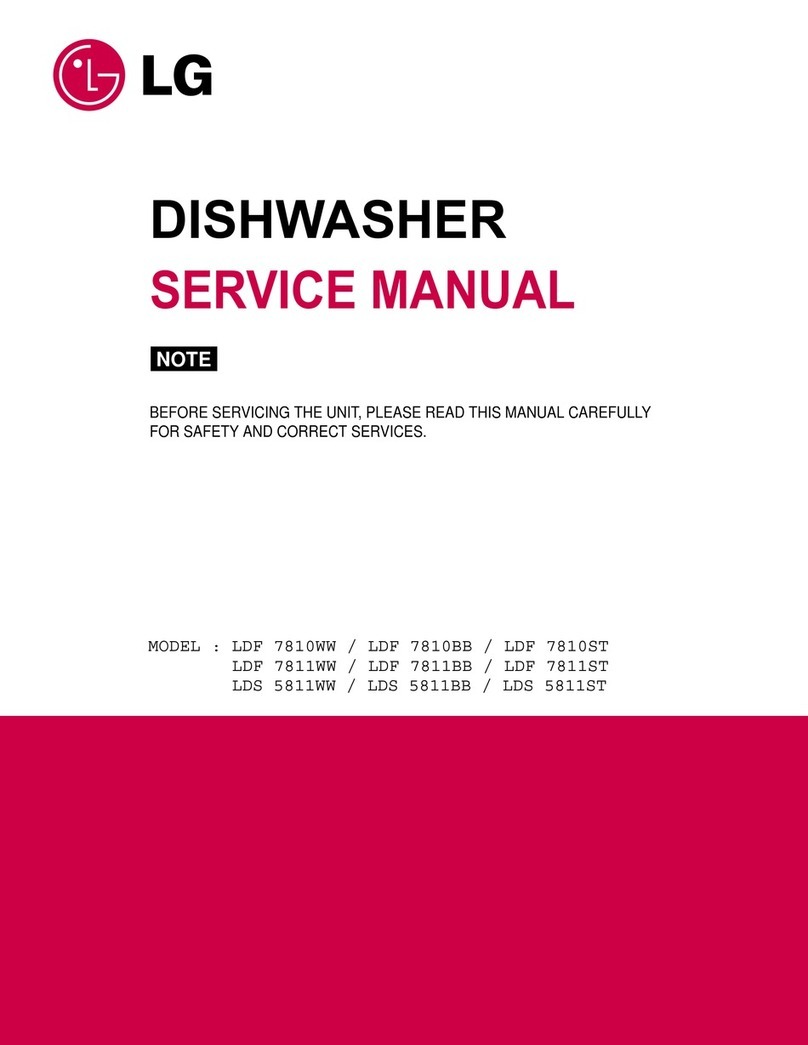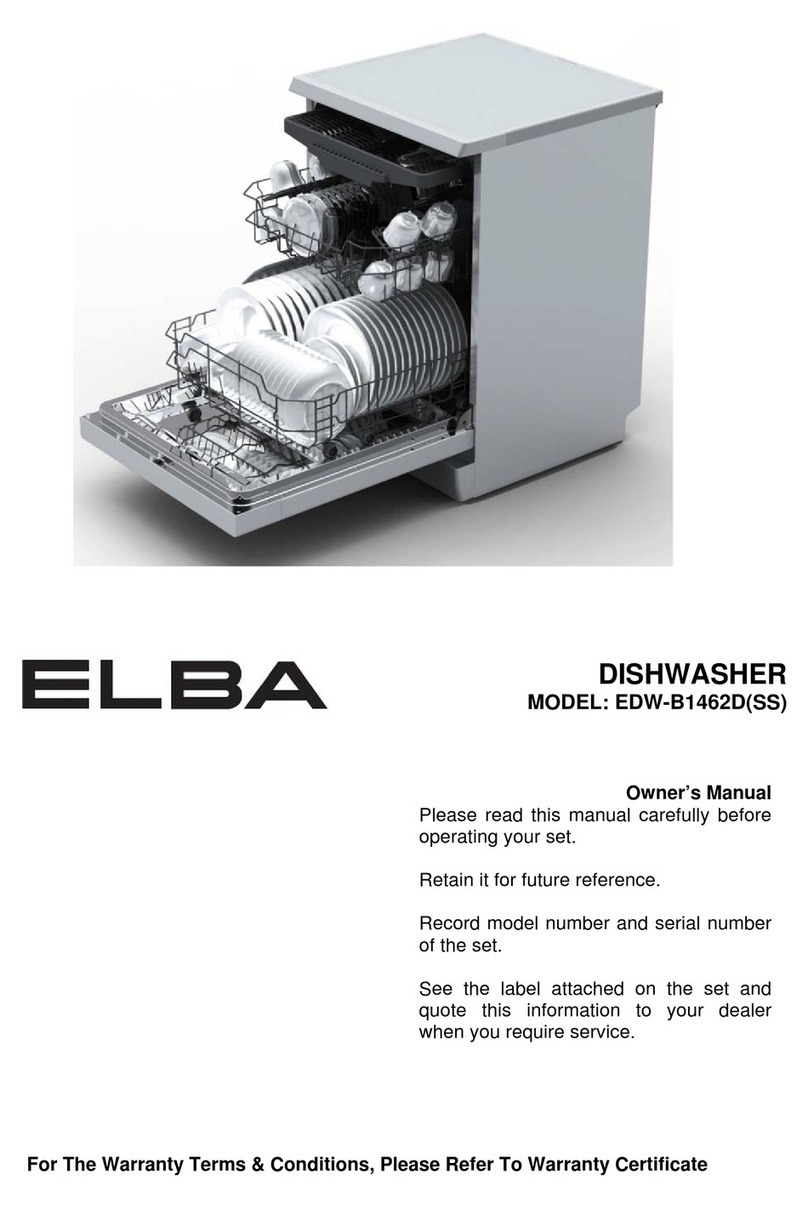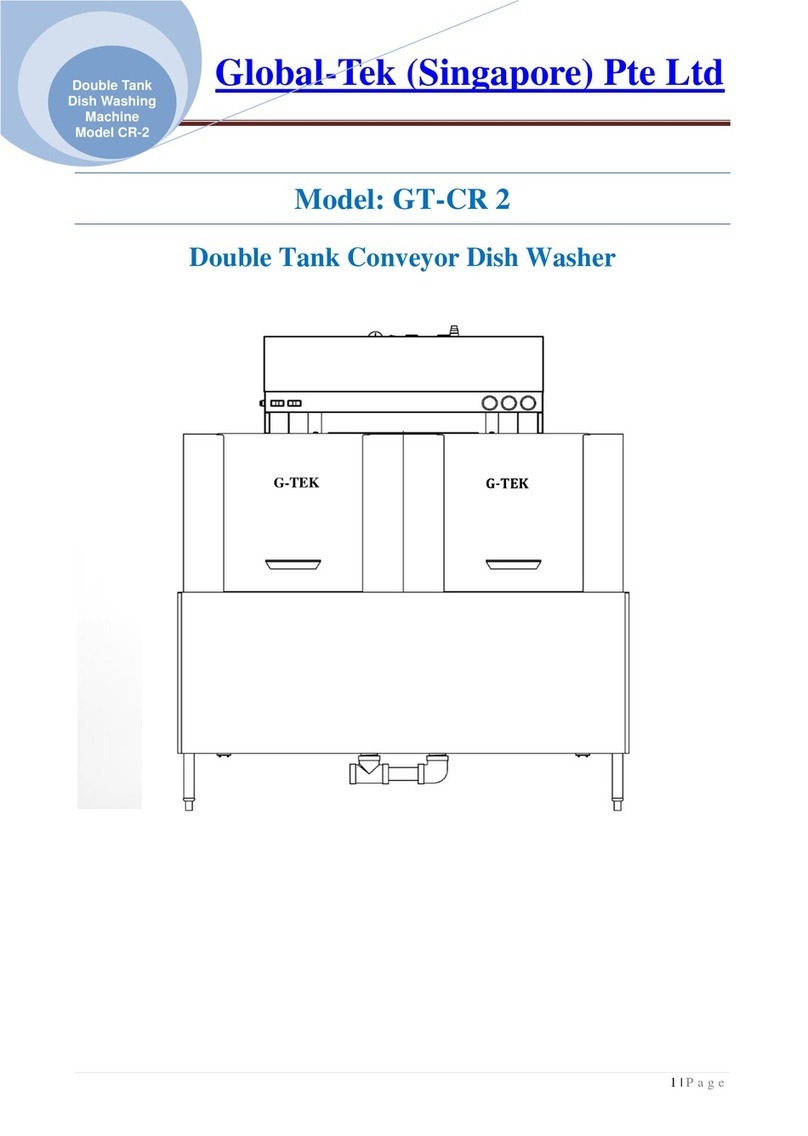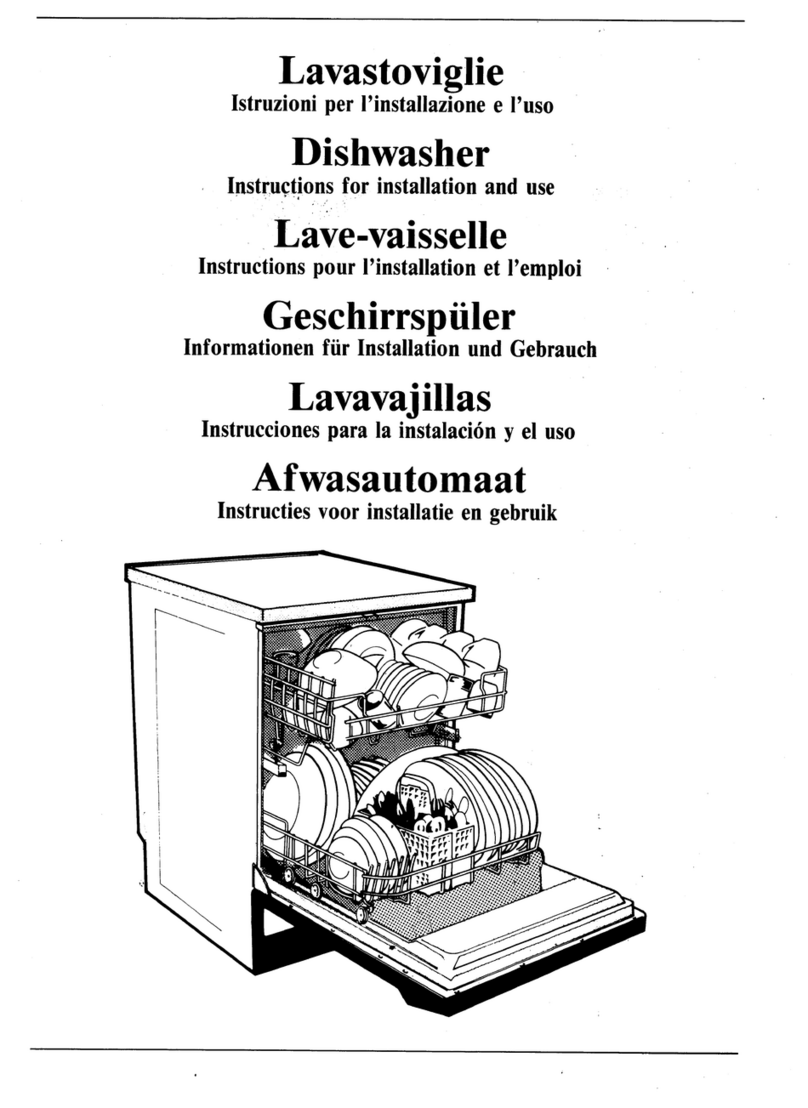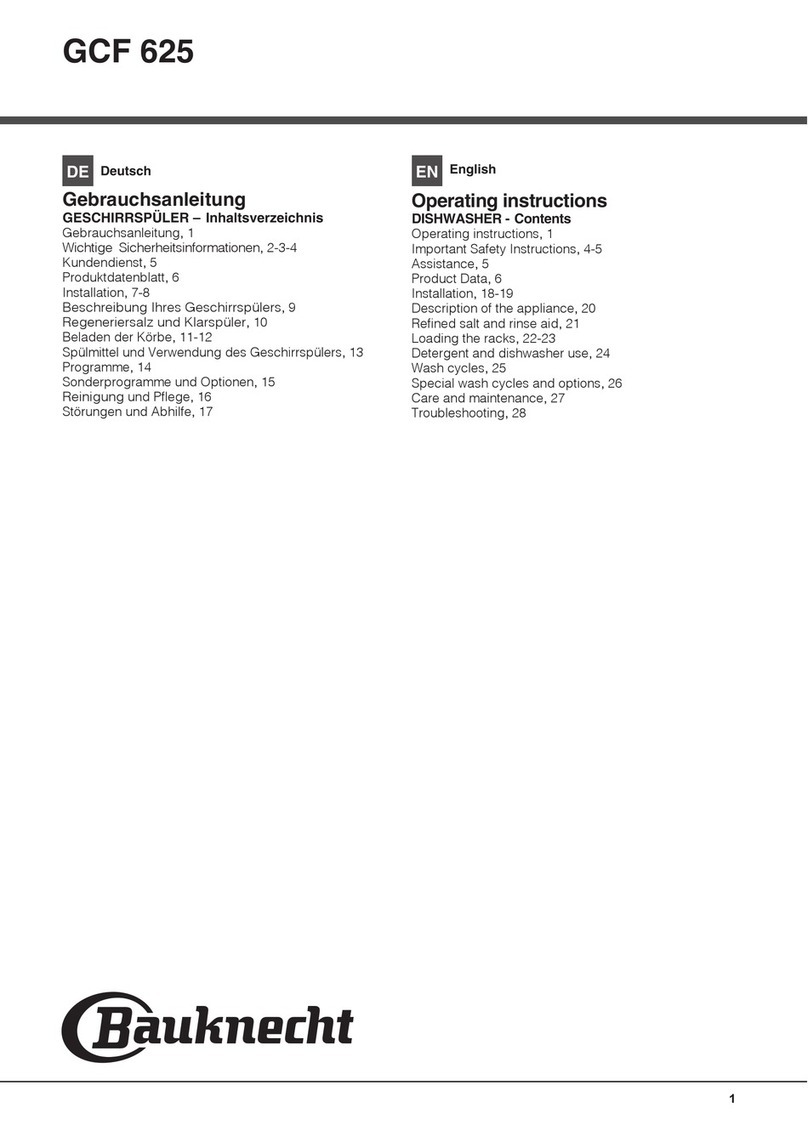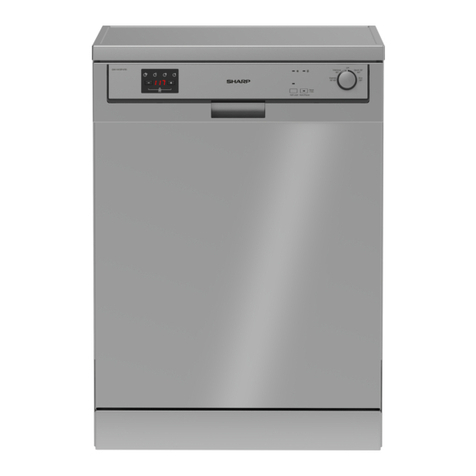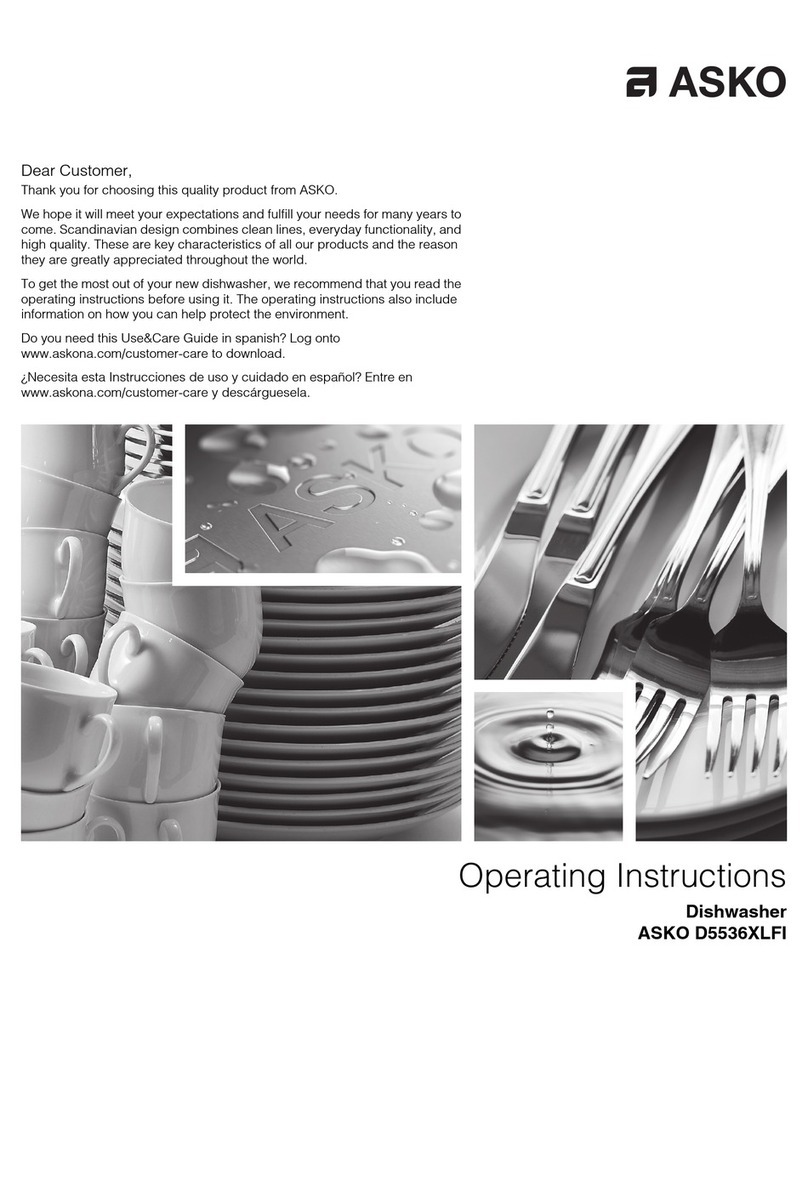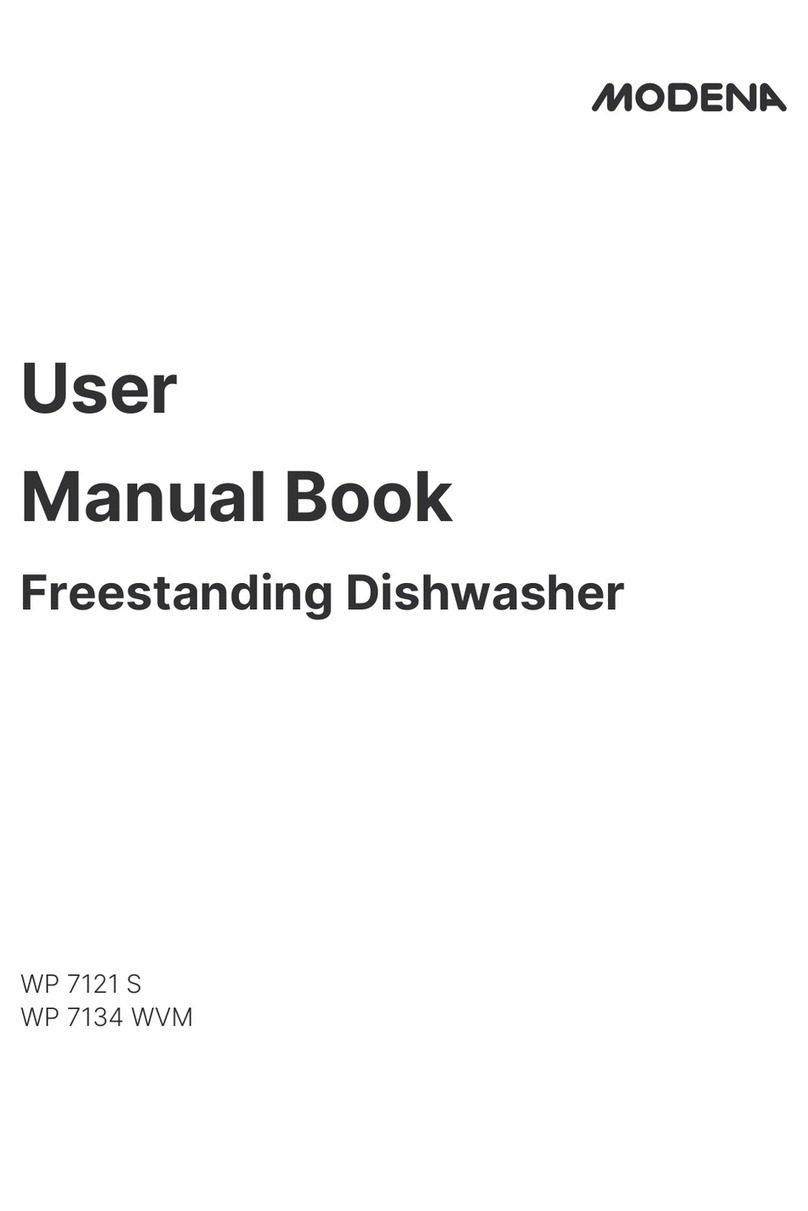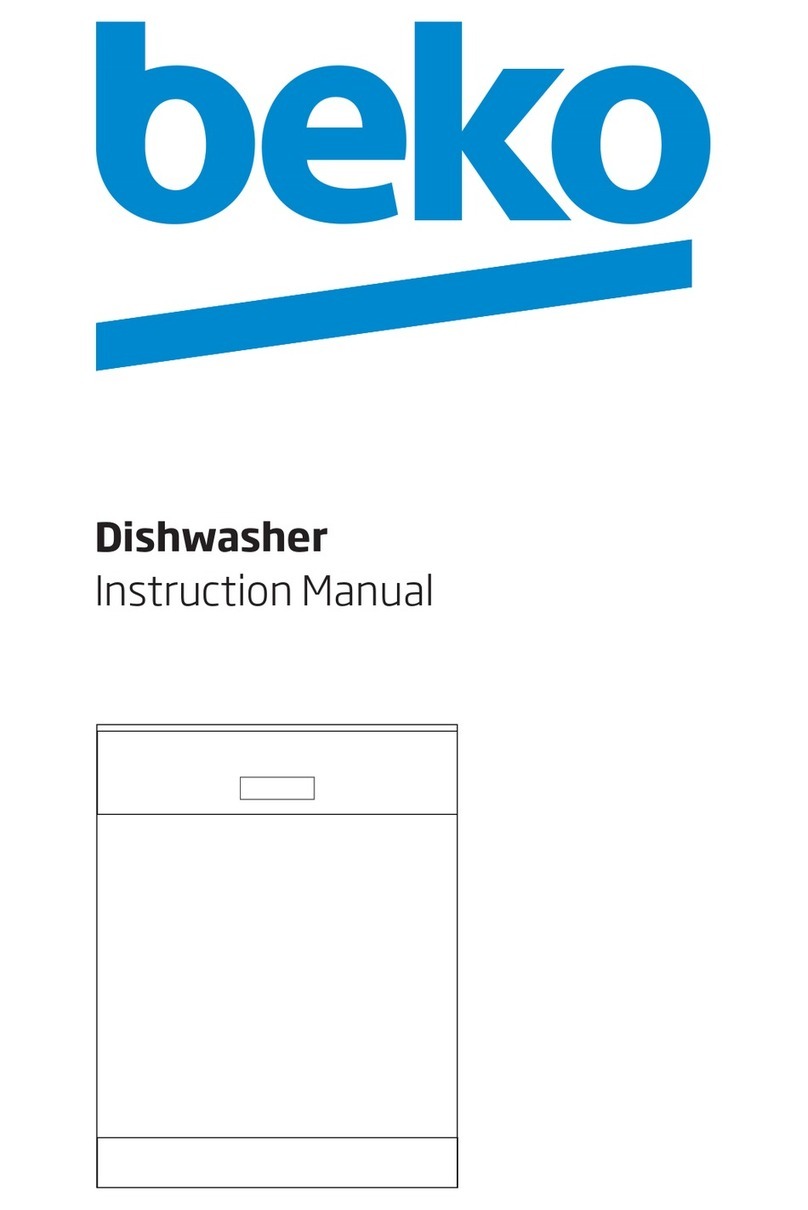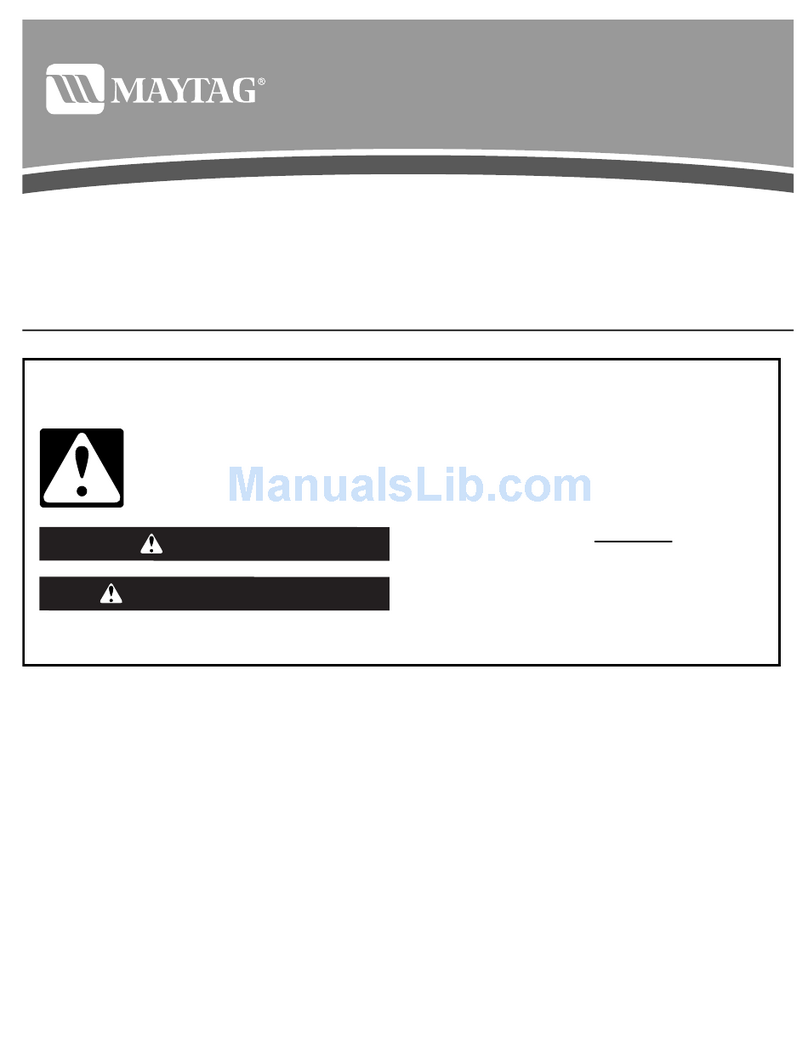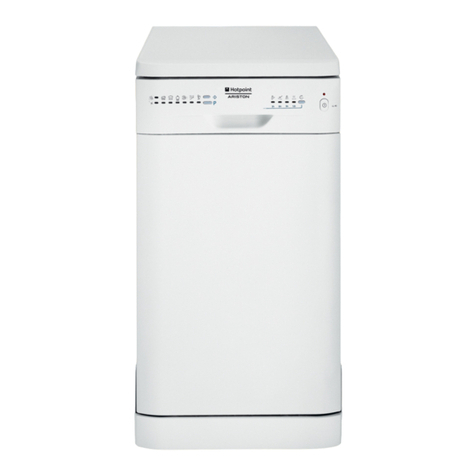.
Tempratm SemorSystem
TOgetdishescleananddryyou
needhotwater.Tohelpyouget
waterofthepropertemperature,
yourdishwasherhasawaterheating
featurethatautomaticallysenses
thetemperatureofthewaterinthe
washcycleandheatsit,ifnecessary,”
tothepropertemperature.This
waterheatingfeaturemayallow
youtoturndownyourhousehold
waterheaterandsaveenergyif
you’rewillingtoletthedishwasher
runalittlelongerwhileitheats
watertothepropertemperature.
Forgoodwashinganddrying,the
enteringwatermustbeat least
120°F.Topreventdishdamage,
inletwatershouldnotexceed150°F.
Howto test watertemperature:
Checkyourwatertemperature
insideyourdishwasherwitha
candyormeatthermometer.
Letthedishwasherrunthrough
onefillandpumpoutcycle,then
letthedishwasherfillwithwater
thesecondtime.
Whenyouhearthewaterstop
filling,unlatchthedoorandslowly
openit.
Measurethetemperatureofthe
waterinthebottomofthetubthis
way:
Removethesilverwarebasketand
placeacandyor meatthermometer
inthewatertowardsthemiddleof
thetub.Hthetemperatureisless
than120”I?,youwiHnotgetgood
washingresults.Higherwater
temperatureis neededtodissolve
qease andactivatepowder
&tergents.
Helpfd hints:Ifoutside
temperaturesareunusuallylow,or
ifyourwatertravelsalongdistance
fromwaterheatertodishwasher,
youmayneedtosetyourwater
heater’sthermostatup.Ifyouhave
notusedhotwaterforsometime,
thewaterinthepipeswillbecold.
Turnonthehotwaterfaucetatthe
sinkandallowittorununtilthe
waterishot.Thenstartthe
dishwasher.Ifyou’verecentlydone
laundryorrunhotwaterfor
showers,giveyourwaterheater
timetorecoverbeforeoperatingthe
dishwasher.
Toimprovewashabilityifthewater
islessthan120°Fandyoucannot
adjustyourwaterheater:Selecta
longercycleandfillbothdetergent
cupsatleasthalf-fullwithdetergent.
How to we arime t3$&nte
Arinseagentmakeswaterflow
offdishesquickerthanusual.This
lessenswaterspottingandmakes
dryingfaster,too.
Forbestdishwashingperformance,
useofarinseagentsuchasJET-
DRYbrandisrecommended.
Rinseagentscomeineitherliquid
or solidform.Yourdishwasher’s
dispenserusestheliquidform.
Howtofilltherinseagent
dispenser.Unscrewthecap.Add
theliquidrinseagentuntilitjust
reachesthebottomofthelipinside
thedispenseropening.Replacethe
cap.Thedispenserautomatically
releasestherinseagentintothe
finalrinsewater.
If youaccidentallyspiH:Wipe
uptherinseagentwithadamp
cloth.Don’tleavethespillinthe
dishwasher.It cankeepyour
detergentfromworking.
If youem% findanyrinse agent,
write:
BENC.KISERCONSUMER
PRODUCTS,Ih?c.
(“JETDRY”)
411W.PutnamAve.
Greenwich,CT06830
6
Yourdishwasher’srinseagent
containerholds4?6ounces.This
shouldlastabout3months.Fill
asneeded.Donotoverfill.
How to choose and we
dem~ente
First, useonlypowderorliquid
detergentsspecificallymadefor
usein dishwashers.Othertypes
willcauseowmmdsing.
Second, dheckthe phosphate
content.Phosphatehelpsprevent
hard-watermaterialsfromforming
spotsor filmonyourdishes.If
yourwaterishard(7 grainsor
more),yourdetergenthastowork
harder.Detergentswithahigher
phosphatelevelwillprobablywork
better.Ifthephosphatecontentis
low(8.7%or less),you’Hhaveto
useextradetergentwithhardwater.
Yourwater department can tell
youhow hard yourwater k%3
canyourcountyextensionagent.
Oryourarea’swatersoftener
company.JustcaHandaskthem
howmany“grainsofhardness”
therearein yourwater.
Howmuch Uk!tel-gentshould you
use? Thatdepends.1syourwater
“hard”or “soft”?Withhardwater,
youneedextradetergenttoget
dishesclean.V/M softwater,you
needlessdetergent.
Toomuchdetergentwithsoftwater
notonlywastesmoney,it canbe
harmful.It can causeapermanent
cloudinessof glassware,called
“etching.”An-outsidelayerofglass
isetchedaway!Of course,this Pm
